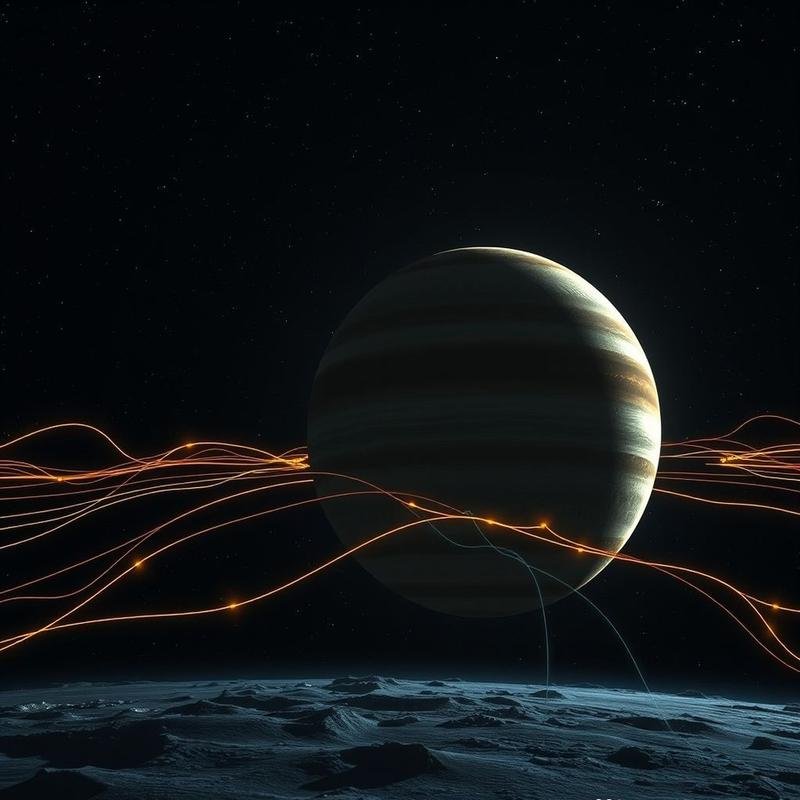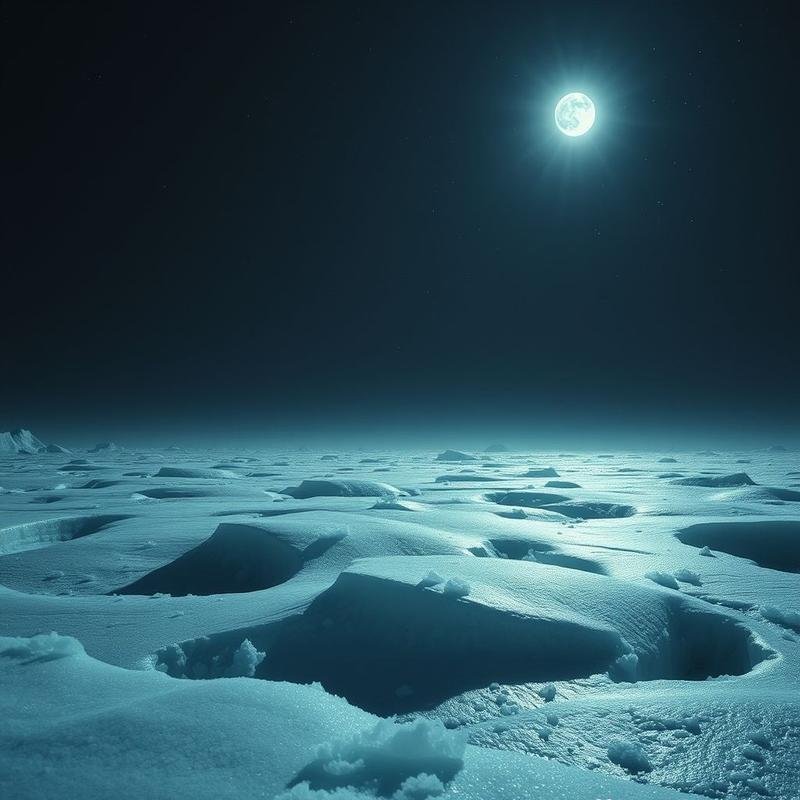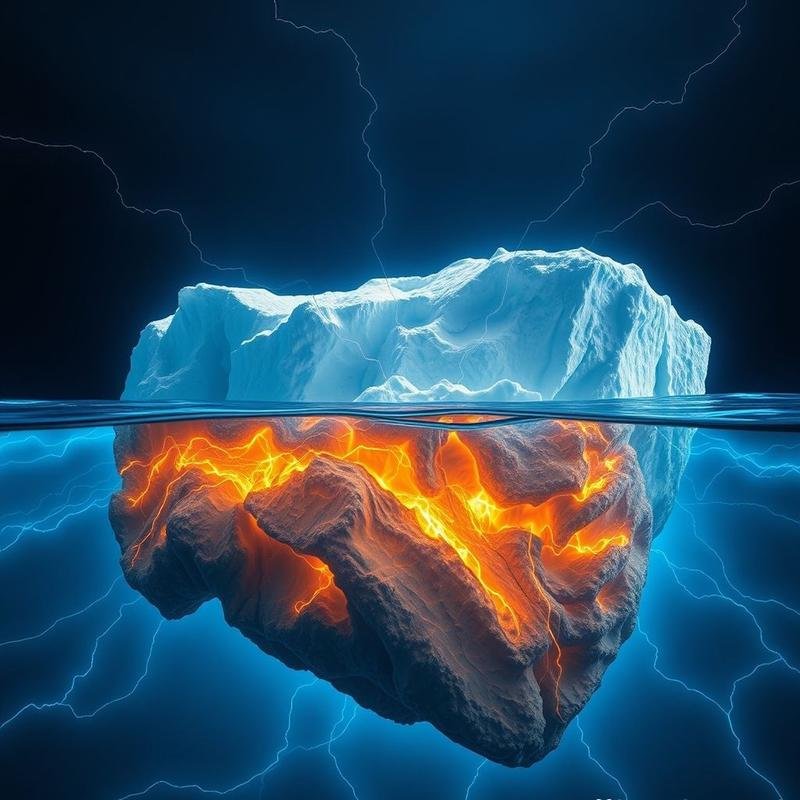Do the Moons of Giant Planets Harbor Life?

Life on Moon Oceans? Exploring Extraterrestrial Habitats
In the vast expanse of space, where gas giants orbit in distant realms, lie potentially habitable worlds: liquid oceans concealed beneath icy crusts. Could these subsurface oceans, found on the moons of Jupiter and Saturn, harbor extraterrestrial life? An exploratory mission is underway to unlock the secrets of these distant celestial bodies.
The Promise of Icy Moons
Gas giants like Jupiter and Saturn have traditionally been considered inhospitable to life due to their dense atmospheres and intense storms. However, orbiting these giants are icy moons that may offer a more promising environment. Deep within these moons, shielded from the harshness of space, lie potentially warm, liquid oceans. These oceans, potentially containing liquid water and essential organic compounds, represent compelling targets in the search for life beyond Earth.
Europa: Jupiter’s Ocean World
Our journey begins with Europa, one of Jupiter’s four Galilean moons, discovered in 1610. With a diameter of approximately 3,100 kilometers, slightly smaller than Earth’s moon, Europa is distinguished by its remarkably smooth, icy surface, strongly suggesting the presence of a vast subsurface ocean. NASA estimates this ocean may contain twice the volume of water found in all of Earth’s oceans.
Evidence supporting the existence of this ocean comes from various sources, including magnetic field measurements obtained by NASA’s Galileo spacecraft. These measurements revealed an induced magnetic field, indicative of a conductive layer, such as saltwater, beneath the surface. Furthermore, images of Europa’s surface reveal numerous fractures and fissures, believed to be caused by the movement of ice above the liquid ocean.
The composition of Europa’s ocean remains a key question for scientists. It is believed to be saline and may contain dissolved minerals and organic materials. The energy source that maintains the ocean’s liquid state is also under investigation. One hypothesis suggests that tidal forces generated by Jupiter’s gravity produce sufficient heat to melt the ice. Another theory proposes that radioactive decay within Europa’s rocky core contributes to heating the ocean.
Enceladus: Saturn’s Plumed Moon
Next, we turn to Enceladus, one of Saturn’s moons, with a diameter of approximately 500 kilometers. Despite its relatively small size, Enceladus has attracted significant scientific attention due to the discovery of plumes of water and ice erupting from its south pole. These plumes, observed by NASA’s and the European Space Agency’s Cassini spacecraft in 2005, provide compelling evidence of a subsurface liquid ocean.
Analysis of the plume material has revealed the presence of water, salt, and simple organic compounds, such as methane and ethane. This discovery suggests the possibility of complex chemical reactions occurring within Enceladus’s ocean, including those that could potentially lead to the emergence of life.
A particularly noteworthy finding is the detection of hydrogen molecules in the plumes, indicating hydrothermal activity on the ocean floor. These hydrothermal vents, analogous to those found on Earth’s ocean floor, could provide the energy and chemical building blocks necessary to support microbial life.
Titan: A Different Kind of World
Beyond Europa and Enceladus, Titan, Saturn’s largest moon, presents another intriguing possibility. Titan is the only moon in the solar system with a dense atmosphere, primarily composed of nitrogen with trace amounts of methane and ethane. Notably, Titan also features lakes and rivers of liquid methane and ethane on its surface.
While Titan differs significantly from Earth, it shares some characteristics, such as a hydrological cycle, albeit based on methane rather than water. Some scientists hypothesize that Titan may be a suitable environment for alternative forms of life based on non-aqueous solvents, such as methane and ethane. However, this remains a controversial hypothesis requiring further investigation.
The Challenges of Exploration
The search for life on the moons of gas giants presents numerous technical challenges. Reaching these moons requires long and costly space missions. Spacecraft must be capable of withstanding the harsh conditions of space, including solar radiation and extreme temperatures. Furthermore, innovative technologies must be developed to explore the subsurface oceans of these moons.
One promising technology involves the use of autonomous underwater vehicles (AUVs) capable of penetrating the icy crust and navigating the liquid ocean. These AUVs could be equipped with sophisticated sensors to analyze the water’s composition and search for biosignatures, such as complex organic molecules or microbial organisms. Designing these vehicles is a significant engineering challenge, as they must operate independently in an uninhabited, cold, and dark environment.
Another proposed approach involves ice-penetrating probes that melt through the ice using heat or lasers. These probes could carry advanced sensors and analytical instruments, collecting data as they descend. Upon reaching the liquid ocean, the probe could deploy a small AUV to explore the surrounding environment.
Future Missions
Future space missions are critical to advancing the search for life on these moons. NASA plans to launch the Europa Clipper mission in 2024, which will orbit Jupiter and conduct numerous close flybys of Europa. Europa Clipper will gather detailed data about Europa’s surface and ocean, helping scientists assess its habitability potential. The mission’s instruments include high-resolution cameras, a mass spectrometer, and an ice-penetrating radar.
In addition to Europa Clipper, the European Space Agency plans to launch the JUICE (Jupiter Icy Moons Explorer) mission in 2023. JUICE will explore three of Jupiter’s icy moons: Europa, Ganymede, and Callisto, collecting data about their composition, oceans, and magnetic fields. JUICE is expected to provide valuable insights into the potential for life in these distant worlds.
Regarding Enceladus, several future missions have been proposed, including Enceladus Orbilander, which aims to orbit Enceladus and land a spacecraft on its surface to collect samples from the plumes. The spacecraft would analyze these samples for biosignatures, such as amino acids, lipids, and proteins.
The Implications of Discovery
The discovery of life on the moons of gas giants would have a profound impact on our understanding of life in the universe. It would demonstrate that life is not unique to Earth and can exist in diverse environments. This discovery would increase the probability of life existing elsewhere in the cosmos and could potentially lead to the discovery of other extraterrestrial civilizations.
Furthermore, the discovery of extraterrestrial life would raise fundamental philosophical and scientific questions. What is the nature of this life? Is it similar to life on Earth? How did it originate? What is the relationship between life and the environment? Answering these questions would reshape our perspective on our place in the universe.
Conclusion
The challenges of exploring these distant worlds are substantial, but the potential rewards justify the effort. The search for life on the moons of gas giants is an exploratory endeavor that requires us to broaden our horizons, push the boundaries of our current knowledge, and embrace the unknown.
Interesting Facts
- Scientists estimate that the thickness of Europa’s icy crust ranges from 15 to 25 kilometers.
- The surface temperature of Enceladus is approximately -200 degrees Celsius.
- The average distance between Saturn and the Sun is approximately 1.4 billion kilometers.
- Galileo discovered Jupiter’s four largest moons on January 7, 1610.
- Enceladus’s plumes contain more than 90% water vapor.
- The atmospheric pressure on Titan’s surface is approximately 1.5 times the atmospheric pressure on Earth’s surface.
- Titan’s orbital period around Saturn is approximately 16 Earth days.
- The lakes and rivers on Titan’s surface are primarily composed of liquid methane and ethane.
The search for life on the moons of gas giants is not only a scientific pursuit but also an expression of our inherent curiosity and our desire to understand the universe. It is a call to explore the unknown, challenge the limits of knowledge, and seek the truth, wherever it may be found. This exploratory journey is a testament to humanity’s capacity for innovation and discovery, and it serves as a reminder that the universe is filled with wonders waiting to be revealed.
Let us continue to explore these hidden worlds and collaborate to unlock their secrets. We may be on the cusp of a discovery that will forever alter our understanding of life in the universe. Join us on this ongoing journey to explore the frontiers of science and knowledge, and subscribe to the channel to be part of this exciting discovery, as the universe is full of secrets waiting to be revealed.










